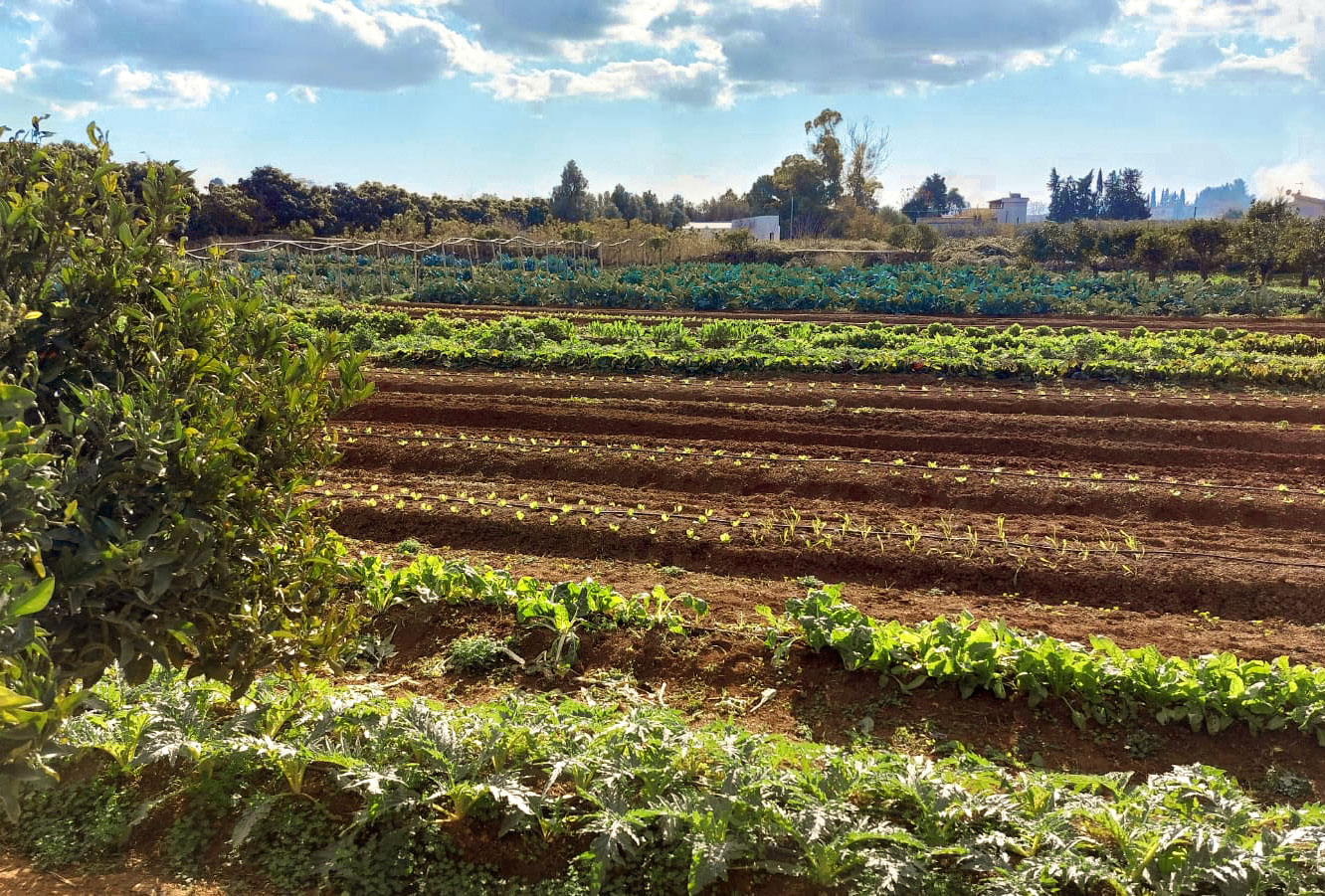The project
SICARIB:
organic regenerative practices in Sicily
A paradigm for a sustainable and valuable agriculture
The SIC.A.RI.B. project aims to improve the biological and physical quality of Sicilian agricultural soils, through the implementation and adaptation of conservative or ‘organic regenerative’ farming techniques and technologies (intercropping, minimum tillage, grassing) to the organic farming systems of the Sicilian region, particularly on the most commonly present rotational arable crops and tree crops. The project is implemented by a partnership composed of five Sicilian farms, one private research organisation and two consulting companies.
To achieve its objectives,
the project is divided into five actions:
1 - Implementation of the organic regenerative agricultural model
2 - Monitoring the impact on soil and agrobiodiversity of the management systems compared
3 - Agroecological innovation in the territorial context and in relation to agricultural policy instruments
4 - Dissemination and sharing of innovation
5 - Coordination, monitoring and project management

To achieve its objectives,
the project is divided into five actions:

1 - Implementation of the organic regenerative agricultural model
2 - Monitoring the impact on soil and agrobiodiversity of the management systems compared
3 - Agroecological innovation in the territorial context and in relation to agricultural policy instruments
4 - Dissemination and sharing of innovation
5 - Coordination, monitoring and project management

The context
According to the latest data made available by SINAB (Anticipazioni 'Bio in cifre 2022'), Sicily is confirmed as the Italian region with the most cultivated areas under organic farming (316,147 hectares), although there is a significant decrease (over 17%) compared to 2020. At the same time, the regional distribution of operators still confirms the island's supremacy (11,128 operators, +2.5% compared to 2020). From the point of view of the international scenario, EU policy instruments such as the European Green Deal, the Farm to Fork strategy and the EU biodiversity strategy for 2030 are, however, drawing attention to new challenges that farms will have to face in the short to medium term. In particular, the Farm to Fork strategy is certainly the one that will most influence the next managerial and management choices of organic farms, as it proposes to transform the European agri-food system to pursue a global leadership in sustainability, in coherence with the similar general objectives of the Green Deal. Added to this is the need to review production systems in an innovative and ecological transition perspective (one of the pillars of the Next Generation EU project). Organic farms are therefore faced with the need to emerge in a market context that is much more dynamic and competitive than in the past, as well as much more demanding, not least in relation to climate-environmental challenges and compliance with CAP objectives. It is therefore appropriate for the organic sector to innovate, using crops with high added value and production protocols increasingly oriented towards the protection, preservation and efficient use of natural resources, primarily soil and water.
The context
According to the latest data made available by SINAB (Anticipazioni ‘Bio in cifre 2022’), Sicily is confirmed as the Italian region with the most cultivated areas under organic farming (316,147 hectares), although there is a significant decrease (over 17%) compared to 2020. At the same time, the regional distribution of operators still confirms the island’s supremacy (11,128 operators, +2.5% compared to 2020). From the point of view of the international scenario, EU policy instruments such as the European Green Deal, the Farm to Fork strategy and the EU biodiversity strategy for 2030 are, however, drawing attention to new challenges that farms will have to face in the short to medium term. In particular, the Farm to Fork strategy is certainly the one that will most influence the next managerial and management choices of organic farms, as it proposes to transform the European agri-food system to pursue a global leadership in sustainability, in coherence with the similar general objectives of the Green Deal. Added to this is the need to review production systems in an innovative and ecological transition perspective (one of the pillars of the Next Generation EU project).
Organic farms are therefore faced with the need to emerge in a market context that is much more dynamic and competitive than in the past, as well as much more demanding, not least in relation to climate-environmental challenges and compliance with CAP objectives. It is therefore appropriate for the organic sector to innovate, using crops with high added value and production protocols increasingly oriented towards the protection, preservation and efficient use of natural resources, primarily soil and water.
The innovation of the SICARIB project

The SIC.A.RI.B. project introduces and adapts in five Sicilian pilot farms (representative of the region’s typical production realities, i.e. arable land and almond groves) the conservative or organic regenerative agricultural model, which is developed through a series of techniques, agro-ecological practices and technologies already tested in other geographical contexts. The proposed model takes its cue from various experiences, conducted at an experimental or real level in international (Rodale Institute in the USA) and national (Tuscany, Veneto, Friuli Venezia Giulia, Marche) contexts. The system will be adapted to the Sicilian regional context, as it is characterised by very different pedoclimatic conditions compared to the previously mentioned sites.
In detail, the agricultural model is developed according to the ORSS® (Organic Regenerative agri-Soil System) production specification drawn up by Arca Srl Benefit and follows some fundamental principles:
efficiency of crop rotation
efficient crop rotation of arable production systems, through the definition of a five-year crop plan that takes into account the benefits of crop diversification and the economic sustainability of the farm;
use of crop associations
use of crop associations thanks to which, in addition to bringing unquestionable benefits to the soil, it is possible to improve the quality and quantity of production, improve the resistance of crops to the main biotic and abiotic adversities and obtain a higher income from the unit area of land;
maintenance of covered soil
maintenance of the covered soil, through the incorporation of cover crops (CC) in innovative herbaceous (arable) and arboreal (controlled grassing in the inter-rows) systems, adopting specific systems of termination and management of crop residues. The main function of cover crops is to improve the biological, chemical and physical fertility conditions of the soil. This benefits the crops that follow in arable crop rotations and tree crops in the case of controlled grassing;
minimal soil tillage
minimal tilling of the soil to limit the rapid processes of mineralisation of organic matter. The tillage process is based on the use of appropriate mechanisation in terms of both equipment and power. In this context, the implementation of the model envisages the definition and adoption of a fleet of machinery capable of satisfying the principles of conservation tillage. Passive machines will therefore be favoured, not driven by power take-off, with the possibility of multiple uses and the ability to intervene on different types and conditions of soil and residues.


